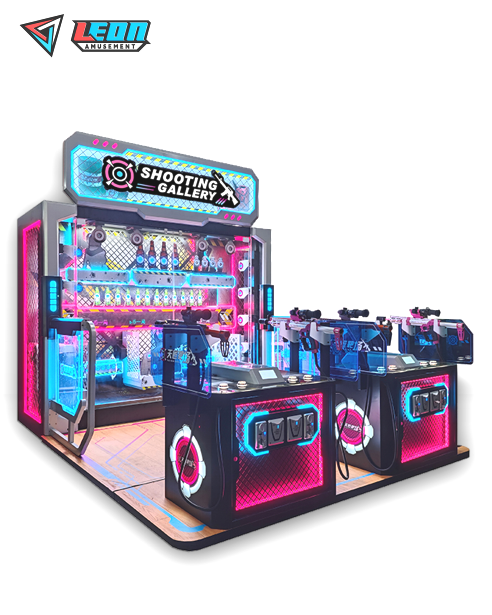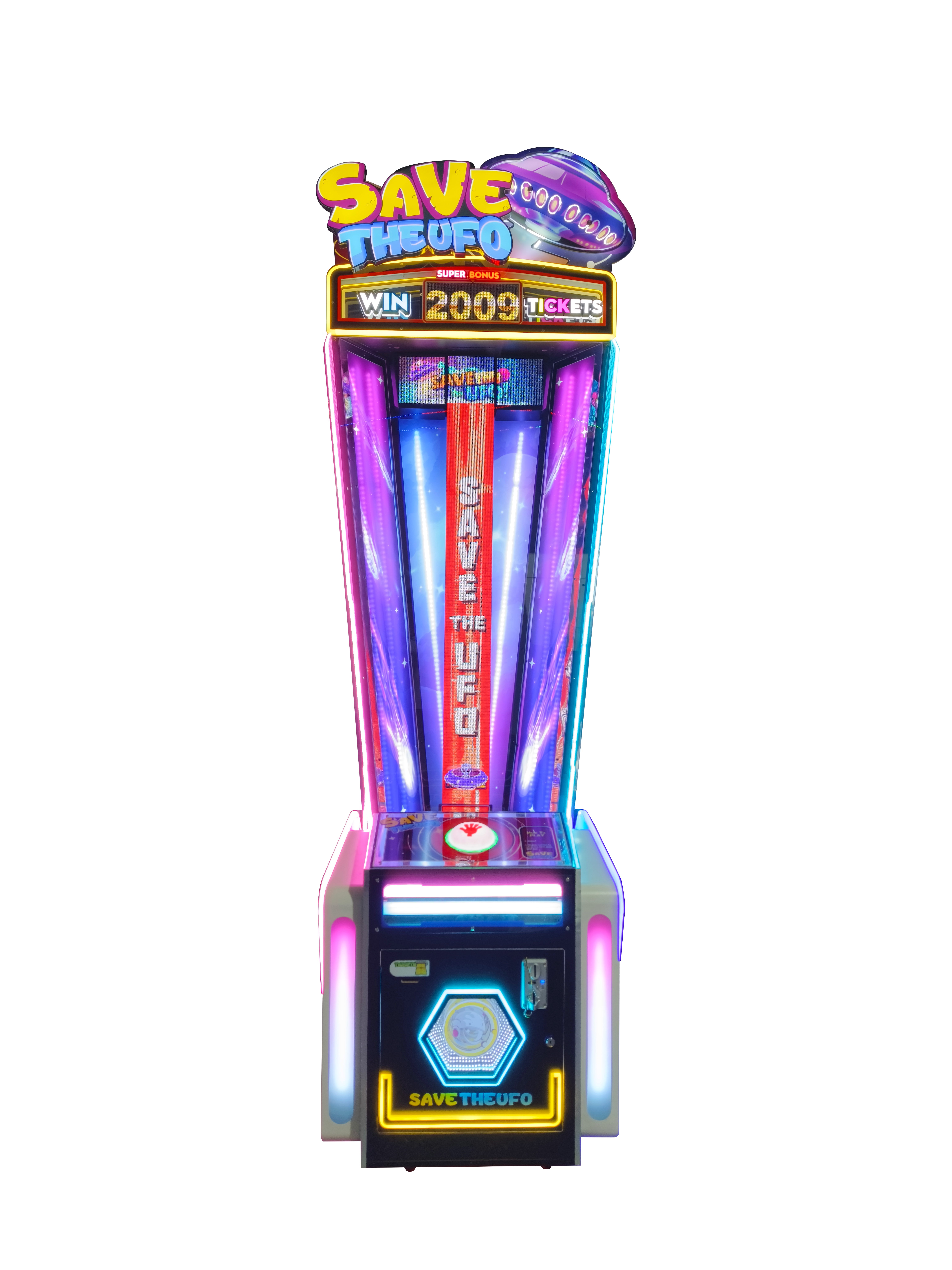Arcade games operate through a mix of hardware and software. For example, claw machines often have payout rates set to 1 in 15 attempts, with adjustable claw strength ensuring profitability. Regular maintenance, including cleaning and calibration, boosts performance by up to 30%.
Table of Contents
ToggleCommon Arcade Game Types and How They Work
Shooting Games
Arcades invariably include shooting games, either of the light-gun or fixed gun variety. There are games that track how accurate you shoot with your gun or shield and also measure the time it takes for you to react, which is a very immersive experience. Many modern shooting games use infrared sensors and cameras positioned near the screen to detect where the gun is aiming, allowing for accurate feedback to the player. House of the Dead), where players move through stages by shooting at targets According to statistics, experienced players have a hit rate of between 60% and 80%, which makes practice an essential part for success in these games.
Racing Games
Move-style racing games (Daytona USA, Mario Kart Arcade GP) These include machines with steering wheels (and sometimes brake and gas pedals, as well a gear shifter), designed to recreate real driving experiences. More elaborate versions add force feedback, enabling the steering wheel to fight and jitter along with your driving experience that adds towards shaping its realism. Many games offer network play so that several cabinets can race each other. In competitive races, it is not uncommon to have racers finish within fractions of a second showing the level of precise driving around each corner.
Rhythm Games
Rhythm games such as Dance Dance Revolution and Beatmania test a player’s timing and rhythm. Users have to hit corresponding buttons as shown on screen in time with the music. Y5 games are all about the savings, so dont be afraid to play a game in this category. These Y online games have books written for them! High level players generally make 99% accuracy, i.e. having all near perfect (1%) or perfect hits through a song consecutively
Redemption Games
Redemption games: such as Skee-Ball; Whack-a-Mole and so on, where players win tickets towards a bounty of prizes. The gameplay for these games is incredibly simple, but still it will be highly addicting. Take Skee-Ball, for example: players roll balls up a ramp in order to try and land in a high-scoring hole. Every game is practically beatable but hard, and you have to do with a bit of luck. A typical reward might be 10 to tickets per play, with big ticket items costing hundreds or even thousands of tickets so players keep coming back.
Fighting Games
Designed for head-to-head competition, fighting games are focused on a few main goals,… It requires the characters to do moves and strategies onto each other as you move your character around. What makes these games tricky are its controls and character balance. Characters usually have a number of attacks during battle, with special moves requiring inputs specific to the fighting games. The best players have the over 50 moves and character match-up play-in conditions memorized, which has ultimately led to cash prize tournaments.

Fairness and randomness
Random Number Generators
At the heart of many arcade games lies the Random Number Generator (RNG). This piece of technology ensures that outcomes are unpredictable. In claw machines, for instance, the RNG might determine the strength of the claw. If you’re wondering why it sometimes feels like the claw lets go of the prize just as you lift it, that’s the RNG at work, ensuring the machine doesn’t give away too many prizes too quickly. A study showed that the payout rate for these machines can be set to as low as 1 in 15 attempts, balancing the need for player satisfaction with the operator’s profit.
Exploiting Software Glitches
Each game comes with its own set of glitches, and arcade games are no exception. Certain action sequences can cause the game to act up, as players have found. In some old racing games, you would be faster if shifts through the gears quickly with a certain pattern. Playing Pac-Man, players evolved a glitch to stay in one safe spot forever and get all the points without any danger. Such bugs typically result from errors in the game’s code, or a developer debugging something that has yet to be finished but forgot to remove it before publication.
Using Physical Manipulation
Manipulation by physical means is another way of hacking arcade games. This is especially common with claw games. A handful of the players have noticed that by shaking the machine at just a right time, they can get-over with these claw misses and win their prize. According to the USA Today data cited, machines with paws jammed inside cost more because they need to be repaired frequently due in part to tweaks that could cause sensitive internal parts (fans; cards and connectors) potential damage as are shaken. While it may be effective in the short term, this is a super risky way to get banned from playing at an arcade.
Coin and Credit Manipulation
If cryptocoins are not a hacking target, who to think that this notorious classic technique will disappear? The most known way is to a use string and tie it with a coin. Players insert the coin then promptly yank it back using a piece of string in order to deceive the slot machine into adding extra credits. At times, players have received phony tokens that can be the same weight and dimensions of actual ones, thereby deceiving their coin receptor. This might be true in older, less sophisticated machines; however modern machines have sensors for this exact reason.
Arcade Games and Maintenance
Daily Inspection and Cleaning
Find Out an Arcade Machine Requiring MaintenanceAppBar arcade games, like any other machines require regular maintenance to operate well. Inspect all machines at the beginning of the day Check for any signs of visible damage or wear. Make some decisions about cleaning for you — the insides of these machines can get dusty and dirty, from dust or debris that comes with use. Clean using compressed air for those hard-to-reach spots and use a soft cloth to clean everything else up. More functional and (as shallow as it is) better looking machines appeal to players. Well-maintained, clean-looking arcades tend to report a 15% increase in play over those that look dingy.
Inspecting Electric Parts
To avoid time, arcade games depend to a large extent on electronic components that can eventually fail. Inspect all connections regularly and make sure that the wires are not frayed or damaged. When a game won’t power on, it is often from a loose connection or bad power supply. You can check the continuity and voltage to track where you are having a fault by using a multimeter. While the prospect of replacing a failed component may be daunting, it is often little more than swapping one defective item for a good replacement. Stock common parts such as fuses, switches and LEDs to limit initial downtime.
Software Update and Calibration
Most modern arcade games need to be updated regularly in the software and firmware code which may have been vulnerable as all other connection like wifi, Bluetooth etc surely are motivated. If it is a hardware you can install updates by updating the driver from manufacturer website keep checking regularly. Another important aspect, calibration —to play games that involve precise controls (like racing or shooting) in the right way at least part of the devices will be constantly being calibrated to work correctly. Calibration procedures, usually performed via a service menu by entering proper codes to change settings – see manufacturer for calibration specifics. Proper calibration can have a huge effect on how the player experiences your game, helping make it more enjoyable and decreasing fatigue from replay.
Troubleshooting Common Issues
Reminds me of how troubleshooting a game, when it inevitably stops working is like unscrambling an enigma. The very first things to do — see if the power is reaching the clock and all cables are well connected. In case if the screen is black then it may be an issue with the display or a connection. If coin mechanisms, that nothing is blocked or stuck. If the game is not posting credits, it could often be the coin sensor or its related wiring. Multiple arcades tell us that 70% of the problems go away simply by fixing these common issues, showing just how crucial a systematic strategy is.








